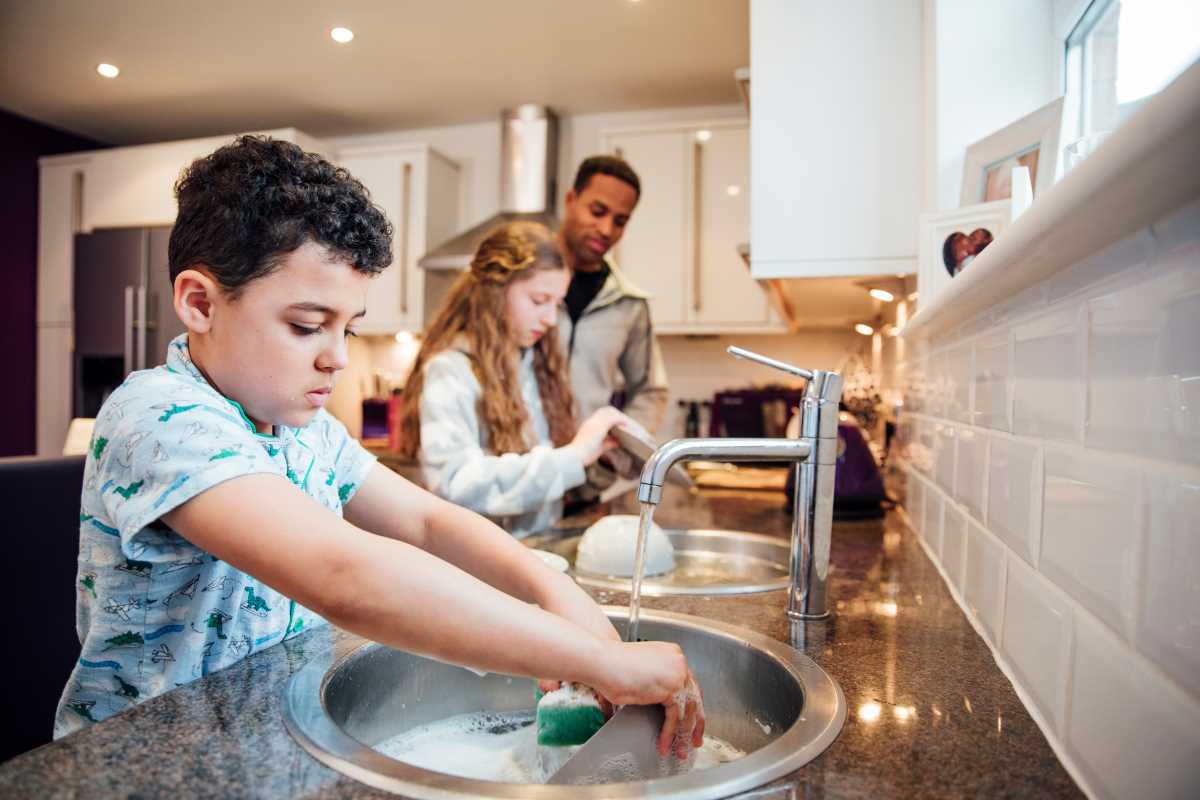Dinner ended and laughter filled the kitchen as everyone gathered around the counter for a quick planning session. Markers in hand, each person took a turn adding their name to the rotating snack-station chart, turning what could have been a simple task into a fun group activity. The kids eagerly doodled on the chalkboard wall with washable chalk, transforming routine chores into an opportunity for creativity. Instead of seeing cleaning and organizing as boring jobs, they approached these tasks with excitement, turning them into memorable family experiences. With a little creativity, even daily routines can bring everyone together in a playful way.
Letting children tinker with roles sparks curiosity and gives them a sense of ownership. When a chore feels like a chance to design, build, or experiment, kids lean in. Keep reading for imaginative ways to weave small tasks into everyday discovery.
Valuable Ideas: New Perspectives on Daily Tasks
Spotting hidden chances for discovery inside ordinary moments shifts chores from obligation to exploration. When winding up a toy car tunnel, a child hones spatial reasoning and fine motor skills without realizing they’re tackling “cleanup.” Turning folding laundry into a secret code game highlights pattern recognition, and naming each pile with silly titles invites kids to flex their imagination. By reframing sorting socks as a mystery-solving challenge, families share laughter and light competition.
Building DIY reward jars lets children customize tokens using scraps of paper, glue, and glitter. Each completed task flips into a creative craft session, where they earn new decorations for their jars. This approach embeds responsibility into art time, so kids link chores to self-expression. Daily routines become recurring design projects that evolve over weeks, offering a living record of achievements and growing skills.
Practical Ideas: Step-by-Step Creative Tools
- Magnetic Task Tiles: These small, customizable plastic tiles stick to your fridge or metal board, allowing kids to slide their name into daily chores and shift them around like puzzle pieces. The benefit lies in tangible movement—children physically relocate their responsibility, which reinforces ownership. Step-by-step usage: 1) Print and cut your template tiles. 2) Attach magnetic backing on each tile. 3) Invite kids to write their name and a fun icon. 4) Arrange the board together each evening. 5) At bedtime, tiles move to “done” zone. Cost and where to find it: roughly $15–20 for a set sold online or craft stores; available nationwide in craft sections. Expert advice: Choose a metal cookie sheet from a dollar store for an instant task board instead of buying a bulky dry-erase board.
- DIY Sticker Reward Chart: A laminated poster with colorful spaces where kids add themed stickers after each small job, like sorting toys or wiping counters. Its advantage is allowing children to pick sticker sheets that match their favorite characters, turning routine tasks into collectible challenges. Step-by-step usage: 1) Design chart with columns for days and rows for tasks. 2) Laminate or slide into a plastic sheet protector. 3) Provide various sticker packs and let kids choose which to earn. 4) Children place stickers after completion. 5) Redeem filled rows for small homemade rewards. Cost and where to find it: under $10 for laminator sheets or sleeves; stickers range from $2–5 per pack, widely sold near school supplies. Expert advice: Rotate sticker themes every two weeks to keep enthusiasm high without overwhelming storage.
- Task Dice Spinner: A wooden spinner mounted on a board with six chore options printed around the circle. Kids love the element of chance, and the spinner’s unpredictability adds excitement. Step-by-step usage: 1) Sketch six chores around a round board. 2) Attach a spinner arrow using a brad fastener. 3) Place board in a central spot. 4) Each morning, let a child spin to discover their first task. 5) Reset spinner for the next person or turn. Cost and where to find it: DIY materials under $8 at hardware or craft shops; premade spinners also appear online for $12–15. Expert advice: Include one “family choice” slot where everyone tackles a micro-project together for shared achievement.
- Photo-Checklist App: A free mobile app where parents snap pictures of desired outcomes—like a neatly made bed or sorted bookshelf—and add them to a checklist. Its advantage is visual clarity: children know exactly what counts as “done.” Step-by-step usage: 1) Download any free checklist app that supports images. 2) Photograph each chore’s ideal result. 3) Assign tasks to individual profiles. 4) Kids mark items as complete and submit for review. 5) Parents verify and award points. Cost and where to find it: free or ad-supported; works on iOS and Android globally. Expert advice: Turn completed visuals into a rotating wallpaper on a shared tablet—kids love spotting their own work as a background highlight.
- Chore Story Cubes: Customize wooden story cubes by gluing small icons or images representing quick tasks. The challenge is small surface area, so choose chores that fit visually. Step-by-step usage: 1) Collect blank cubes or dice. 2) Attach tiny printed pictures of tasks. 3) Place cubes in a bag. 4) Kids draw two cubes and narrate a mini adventure that includes both tasks. 5) Act out or complete the combined chores. Cost and where to find it: roughly $5–7 per set of cubes from game shops or online; glue and images are household staples. Expert advice: Swap in seasonal icons—pumpkins in October or suns in summer—to keep story themes fresh.
Make Family Challenges from Daily Chores
Turn chores into fun games. Time races between siblings, switching roles and rewarding winners with a homemade crown. Add a “mystery mentor” night where one child gives playful clues for themed chores, like “sparkly” for polishing or “sea of socks” for laundry.
Let kids decorate feather dusters or chore frames to blend creativity with cleaning. Small DIY touches make routines feel like play.
End each week with themed rewards—like a snack bar—for steady teamwork. With art, games, and lighthearted twists, everyday chores become fun, family-building moments.
 (Image via
(Image via





